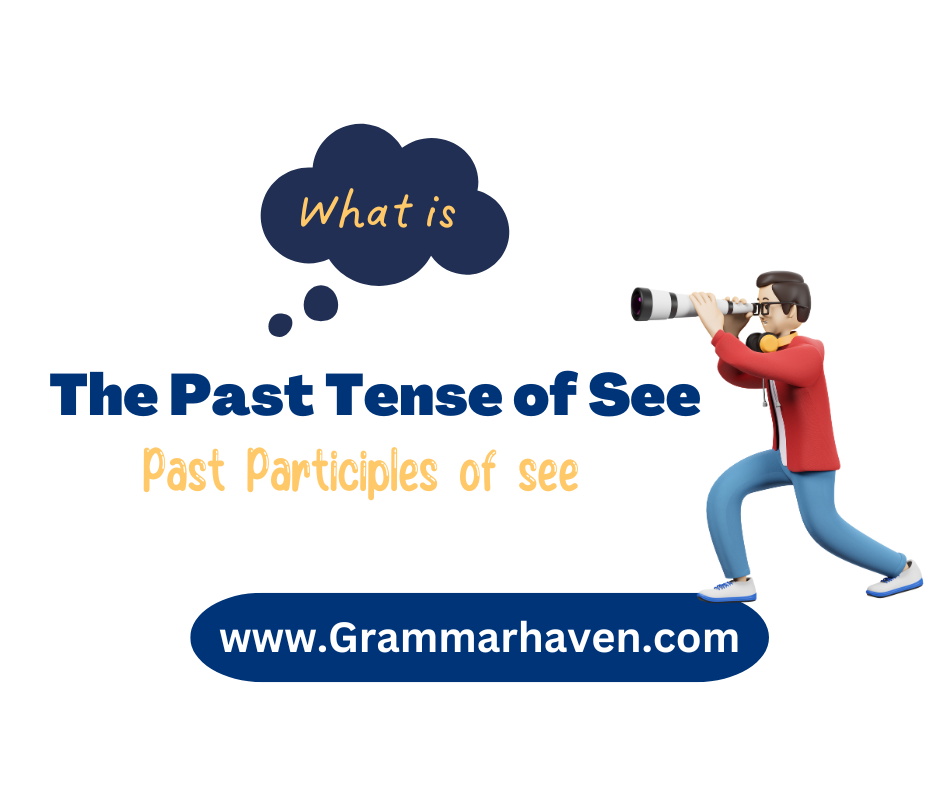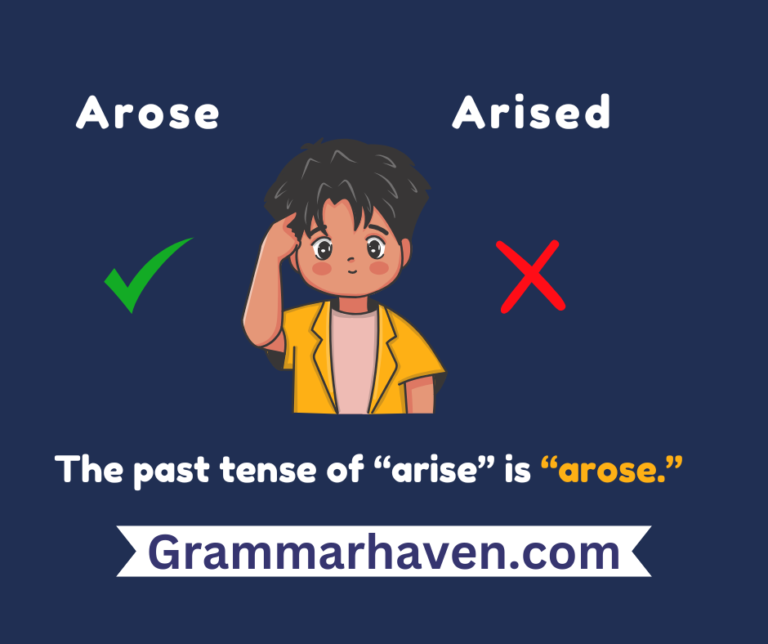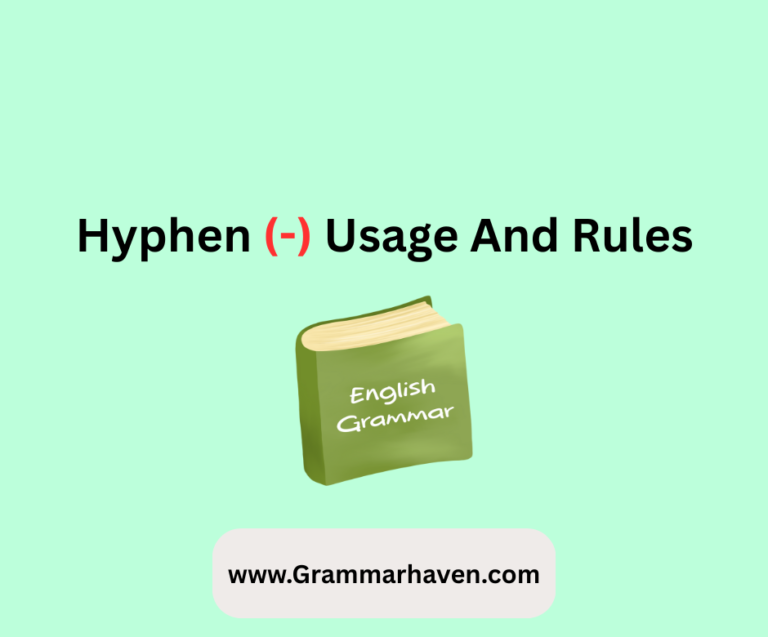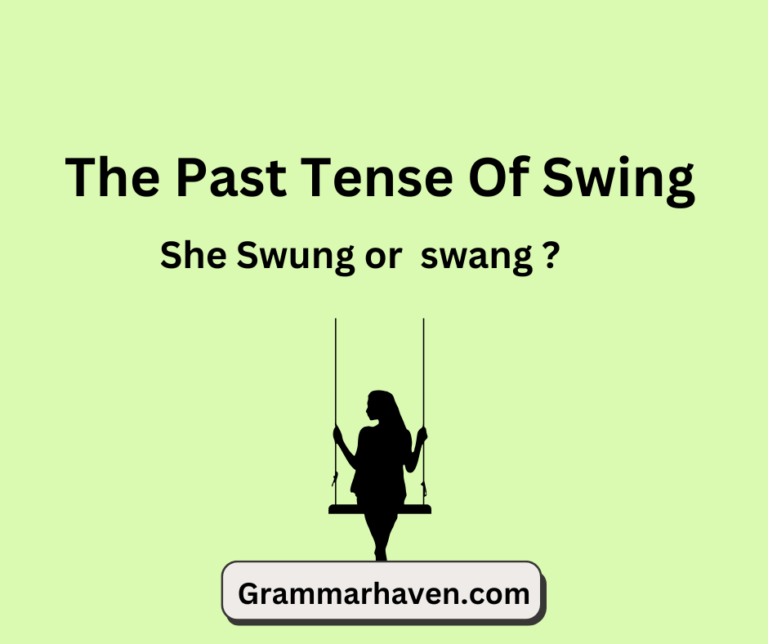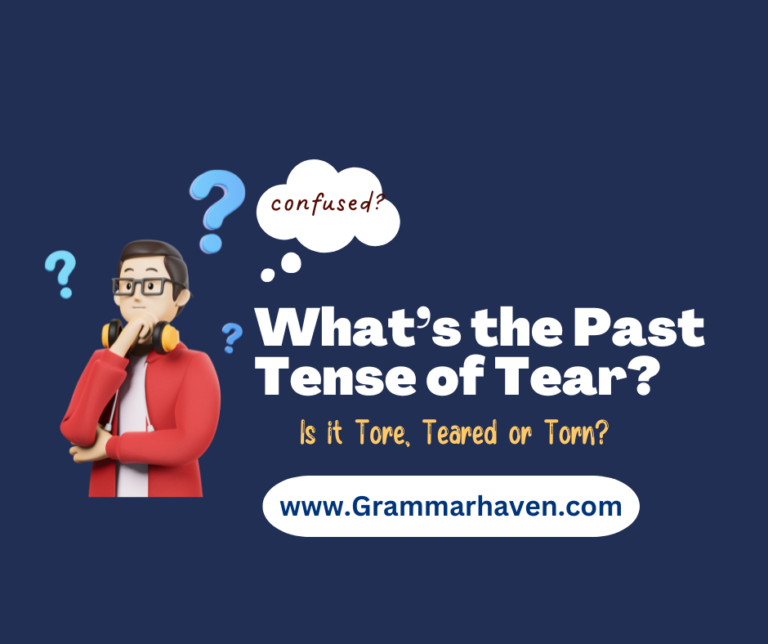What is the Past Tense of See and its Past Participle?
It is important to learn the past tense of see and its past Participle as In English, the verb “see” changes to “saw” and “seen,” when we talk about the past. And many people find these shifts confusing. Picture this: you’re in a conversation, and you need to express something you observed in the past. How do you say it? This article will break down the past tense and past participle of “see,” ensuring you’re confident in using them. Get ready to elevate your grammar knowledge and communicate more effectively
What is the Past Tense of See?
When we have to use the past tense of see ,we refer to the word “Saw.”
Regular Verb:
Follows a pattern of adding “-ed” to the base word .
E.g. Walk turns into “walked” .
Irregular Verb:
“See” is an irregular verb and changes in an unexpected way
E.g. the past tense of see is “saw.”
Examples :
- He saw a beautiful sunset at the beach yesterday.
- He saw his favorite actor at the mall last weekend.
- My nephew saw a shooting star during their camping trip.
Past Participle of “See”
The past participle of “see” is “seen,”
As the past participle it describes actions that are completed in relation to the present or past .
- Used in: perfect tenses
- “Seen” is also used with auxiliary verbs like “have” or “had.”
Examples:
- We both have seen that movie several times.
- They had seen the documents before the meeting started.
- They have seen many amazing places during their trip to Europe.
You may also like to read past tense of tear.
Seen vs Saw:
A common mistake occurs when “seen” is used as the past tense of “see” without the proper auxiliary verb. But the fact is , “saw” is always used for the past tense by itself, while “seen” is used with an auxiliary verb.
Keep in mind that for the simple past tense, “saw” is used on its own while “seen” must always be paired with an auxiliary verb like “have,” “has,” or “had.”
That helping verb is often a form of to be (is, am, are, was, were, will be) or to have (have, has, had, will have).
This is one of those concepts that might sound tricky until you see it in action. The following examples correctly use seen as a past participle verb:
When to Use saw You’ll want to use saw anytime you are referring to sight in the past tense and without a helping verb, meaning it acts on its own in a sentence.
Use of Seen and Saw in Examples:
Here are a few comparison examples to show the correct use of “saw” and “seen”:
- Saw: I saw a rainbow after the rain yesterday.
Seen: I have seen a rainbow many times before. - Saw: He saw a cat sitting on the roof last night.
Seen: He has seen that cat around the neighborhood before. - Saw: They saw the fireworks from their balcony.
Seen: They had seen similar fireworks at last year’s festival.
You can notice “saw” is used alone for simple past events, while “seen” requires an auxiliary verb like “have”, “has”, or “had”.
Conclusion:
For mastering the past tense of “see” and its past participle “seen” it is important to learn their unique roles and contexts .Understanding the difference between “saw” and “seen” plays an important role for anyone looking to communicate effectively in English. Remember to keep practicing the rules associated with past tense verbs .Use ‘saw’ for things that already happened, and ‘seen’ for things still true now. Practice, and soon talking about the past will be easy.
FAQ’S
What is see and saw?
These words are different forms of the same verb ‘See’. They are examples of verb endings and verb tenses. Saw is the past tense of the verb see. Can be used to form simple past tenses. For example: “I saw”, “he saw”, “they saw”.
Do you say “I saw” or “I seen”?
Saw is the past tense form, as in I saw him yesterday. Seen is the past participle form and is used to form the perfect verb tenses, as in She has seen every movie in the series (present perfect tense) and She had seen every movie in the series until this one (past perfect tense).
Is it I never saw or seen?
Both can be correct, depending on the tense you’re using. “Saw” is past tense. So if I said “I never saw it coming”, I would be referring to an event which has already happened. “See”, on the other hand, can be either present or future tense.
What is the past tense for ‘see‘?
When we have to use the past tense of see ,we refer to the word “Saw.”

